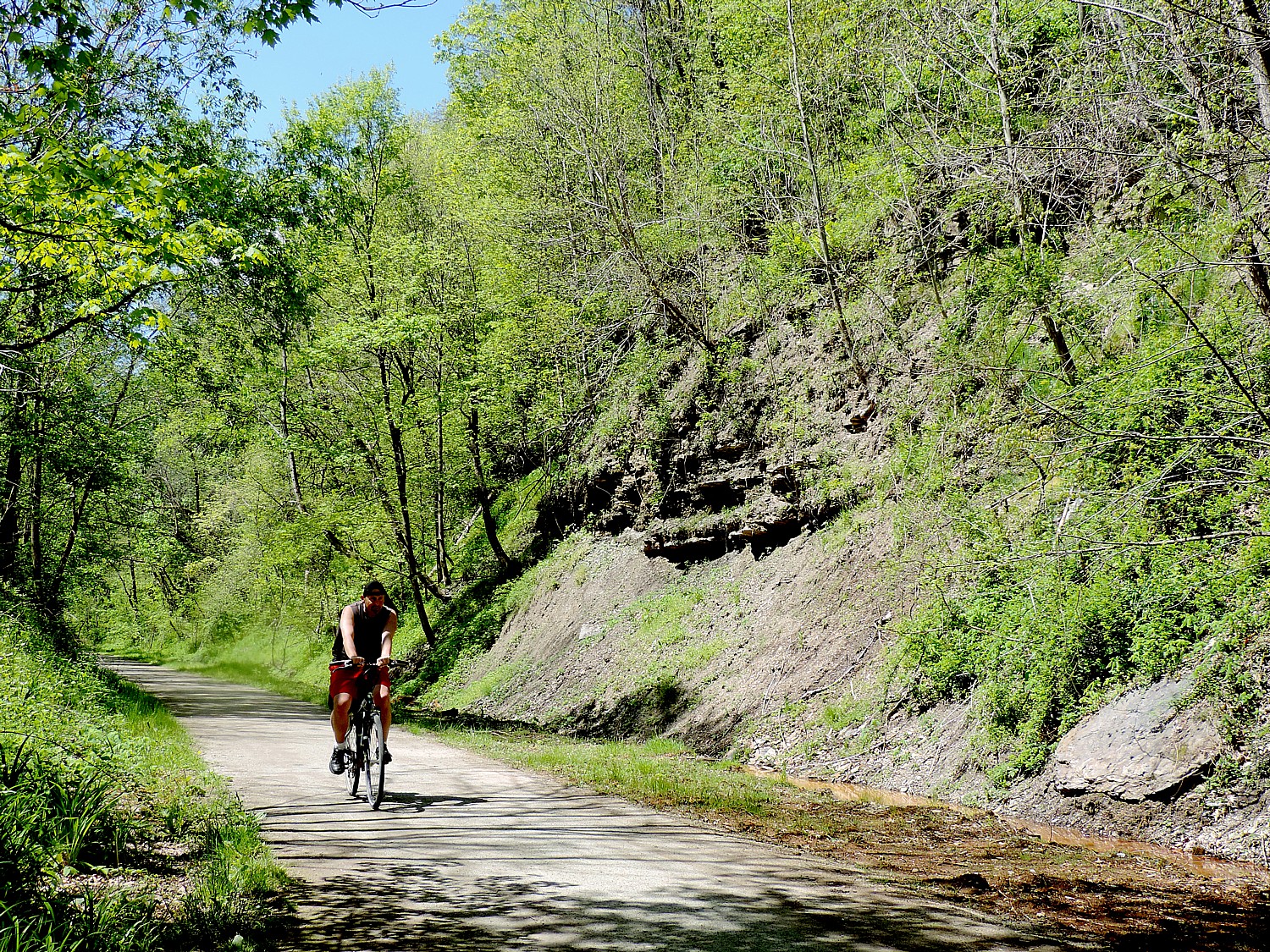
By Karen Rubin, Travel Features Syndicate, goingplacesfarandnear.com
(After meeting up at Homestead, PA and bussing to the start of our Rails-to-Trails Conservancy’s first springtime Sojourn, a three-day biketour on the Great Allegheny Passage, we rode 33.5 miles from Harnedsville to Adelaide on Day 2, a ride highlighted by a sidetrip into Dunbar to see Donald Trump’s donation of Pascal’s ‘Seated Torso’ glass sculpture to the historical society. Our adventure continues.)
The last day of Rails-to Trails Conservancy’s first spring sojourn, a three-day supported bike tour on the Great Allegheny Passage, is our longest ride, 49 miles from Adelaide to West Homestead, and, unlike our first two days which have been essentially downhill, has a good number of ascents, to boot – mostly as we come into the urban area and have to ride up and over bridges and overpasses.
This ride offers the starkest contrasts between the wholesomeness of a trail reclaimed for nature, and the industrial heritage that both built and destroyed this region’s environment.
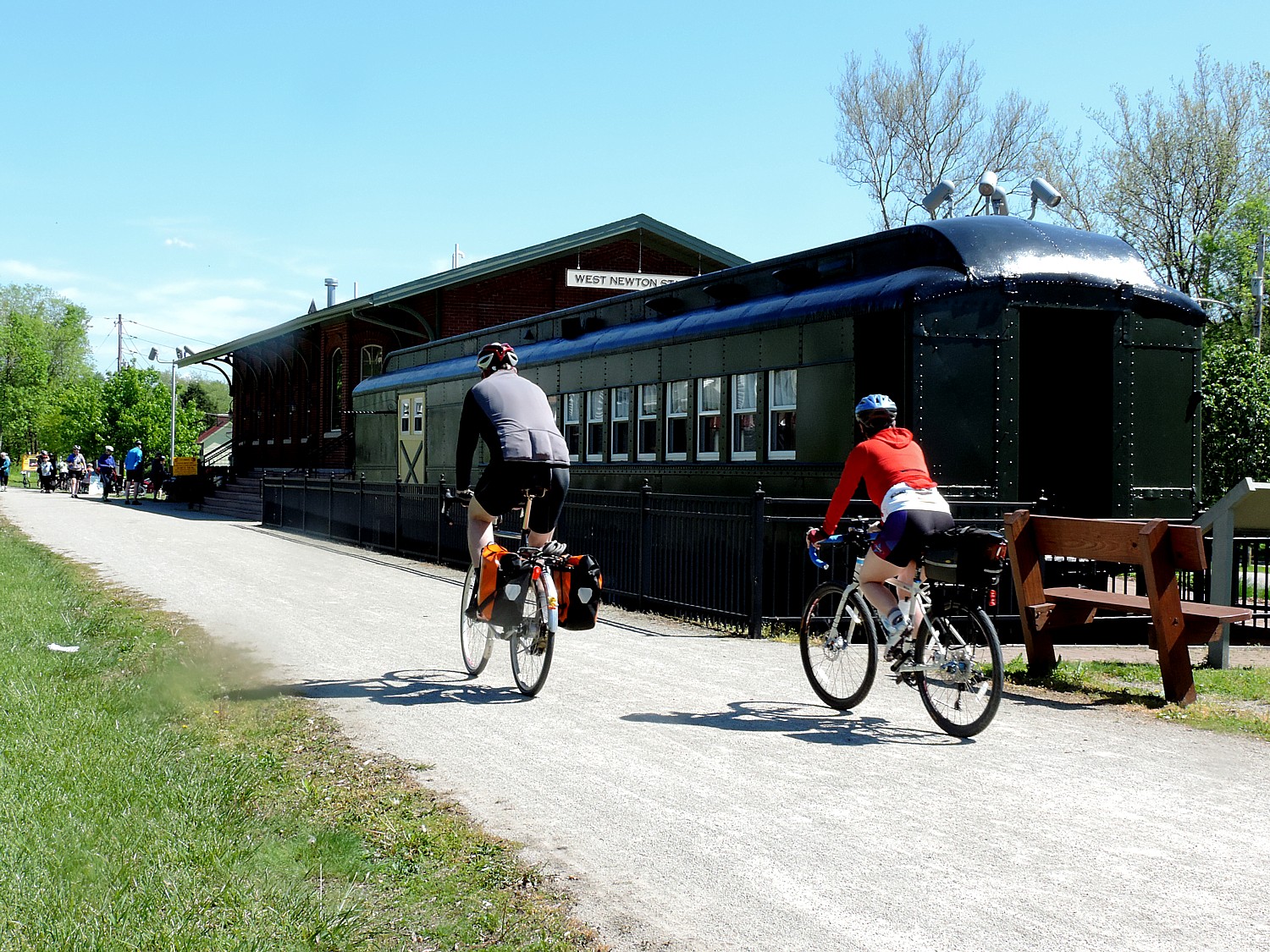
We have three support stops. The second, at 21.9 miles, is in West Newton at a replica of the 1910 P&LE train station, now a historical society center and retail shop, with a train car outside. Literally across the “street” are three bed-and-breakfasts, right off the trail.
If you took the time to explore the downtown, you would find some quaint storefronts (some needing new owners), and some tucked away gems like the Victorian home on Vine Street, the historic Plumer House (circa 1814) on South Water Street. I take time to explore the historic West Newton Cemetery, accessible from the trail.
The trail follows the Youghiogheny River with beautiful scenic views.
In the 1890s, this area that we ride through that seems so natural and so pristine today, was the Industrial Heartland of America – steel mills, coke ovens filled the air with suffocating black smoke, blighting the area and making it unhealthy to live.
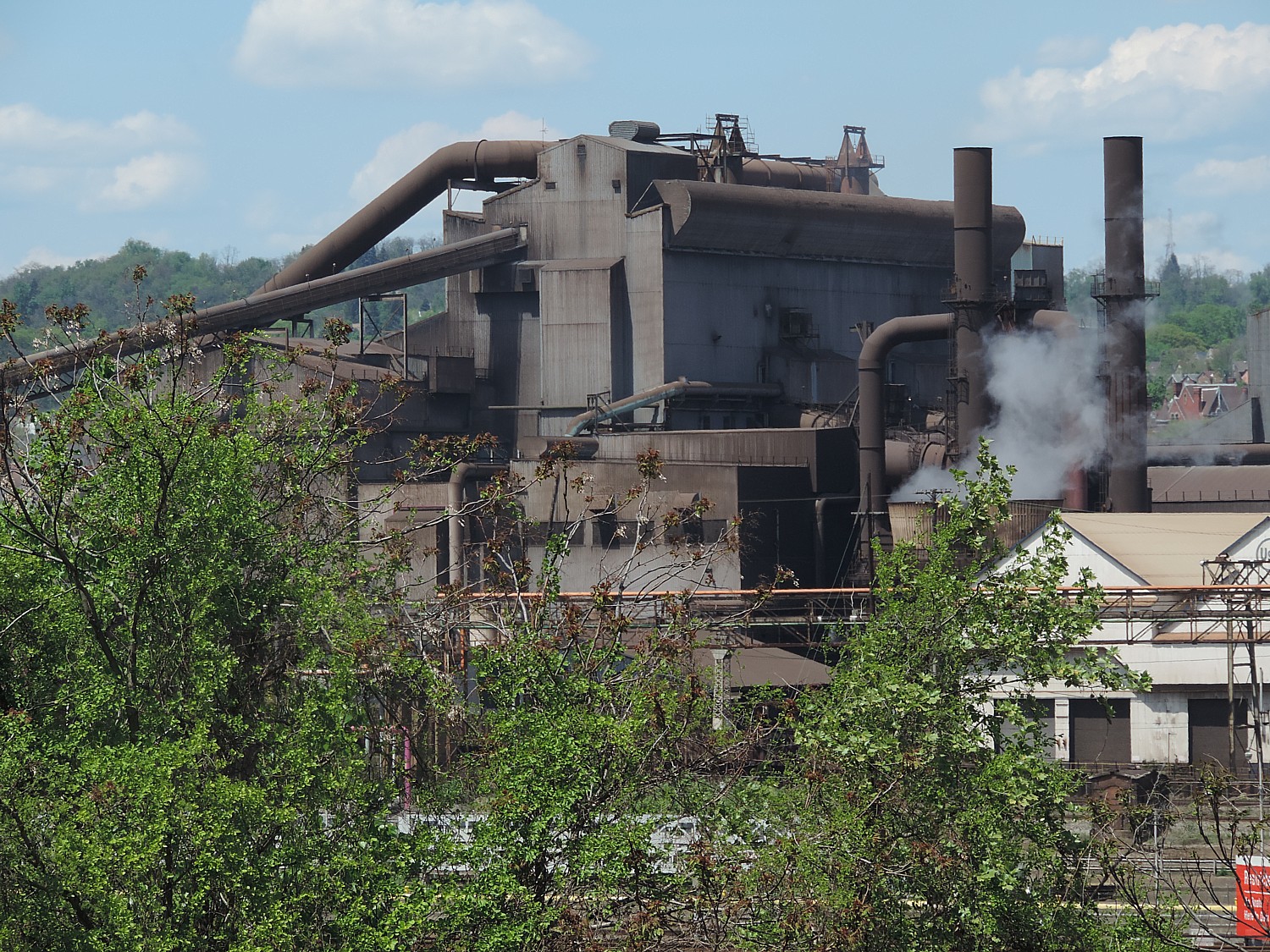
“They didn’t have the number of trees we see now,” Tom Sexton, the Northeast Regional Director for Rails-to-Trails Conservancy tells us during our nightly presentation. “The skies were so dark, they needed to use lights during the day.”
But these steel mills also were enabled the expansion of the United States– forging the bridges, railroads, skyscrapers – and the booming industrial economy that made the United States a world power. The wealth generated – and the economic policies – produced the Gilded Age, a time of great income inequality, when money and power was concentrated in a handful of Industrial Barons like Andrew Carnegie and Henry Clay Frick, among the richest people in the world, whose steel plants accounted for 30% of all the steel produced in the US.
We associate Carnegie and Frick today as great philanthropists, but they were ruthless industrialists who exploited labor and the environment for their personal benefit.
Sexton cites a book, “Meet You in Hell: Andrew Carnegie, Henry Clay Frick, and the Bitter Partnership That Changed America,” by Les Standiford, who drew his title from Frick’s response to Carnegie’s deathbed invitation to meet: “I’ll meet you in hell,” Frick responds, perhaps a reflection of the penance they would have to pay for the hellfire they forced their workers to endure.
Carnegie and Frick were enthralled by efficiency, developed new processes, new tools to maximize productivity and manpower, Sexton tells us. That helped them add to their fortune, but “wasn’t a good lifestyle for people living and working in the steel and coal plants.
“They cut costs in all ways.” For example, workers lived in company towns and had to shop in company stores where prices were high. People were working 12 hours a day and wanted a shorter day.
“Being efficiency experts, they did study and found that after 8 hours, worker wasn’t so productive, less efficient, so they reduced the work day to 8 hours.”
Still, conditions were abominable and on July 4, 1892, the steel workers went on strike. After a bloody battle, followed by the state militia ultimately quashing the labor action months later, in November, Carnegie Steel reinstated the 12-hour day as retribution.
Sexton relates this story because our ride will take us passed the historic Pump House in West Homestead where the bloody labor battle took place.
Sexton’s story is in my mind as we ride, as I reflect on the glorious landscape. To think this whole area was so blighted – didn’t have the trees, the clear clean air, the clean rushing water that is so intoxicating now.
Indeed, the ride is gorgeous up until Boston where there is a beautiful park and we have our third support stop. Then, just as we ride through some trees, it is like culture shock because the trail becomes very urban – broken and winding, and then plops you out to a street beside the railroad tracks.
We go through a series of streets before getting back on the trail, going up and over several railroad crossings, past shuttered factories.
This is the part of the ride when we get to peer back into the landscape of the Industrial Revolution and get a greater appreciation of the clean pure air and the trees and clean water that we had been seeing along the GAP.

The most interesting part of the ride is when we come to the Pump House at West Homestead, the site of a bloody strike which Sexton has described to us, the site in 1892 of one American Labor’s bloodiest battles. I frankly might not have stopped (though there is also a restroom there for the benefit of the GAP trail riders) and spent as much time inspecting the site were it not for Sexton’s orientation.
Notes from the site tell the story: “In the early morning hours of July 6, 1892, at the Pump House of the Carnegie Steel Company’s Homestead Works, thousands of workers, their families and supporters, armed with sticks, rocks, and guns rushed to meet two barges coming up the Monongahela River. The barges carried 300 Pinkerton guards who had been sent to protect the works during the Homestead Strike and Lockout.
“After bitter fighting throughout the day resulted in the deaths of seven strikers and three Pinkerton men and dozens of others wounded, the guards surrendered. They were then forced to “run a bloody gauntlet” while being lead to a temporary jail at the Homestead Opera House until they were sent out of town by rail the next morning.
“Henry Clay Frick, Andrew Carnegie’s partner, convinced Pennsylvania Governor Pattison that Homestead was under “mob rule”. On July 12, 1892 the governor ordered 8,000 state militiamen into Homestead. The strike and lock out continued until November when unskilled laborers asked to be released from their strike pledge. Two days later, the strike ended – the union had been broken. The Battle of Homestead signaled the end of union activity in the steel industry until the 1930s” (riversofsteel.com).
After learning the history of the strike, a sign that salutes steelworkers seems more ironic than respectful: “In honor of the employees, USS. Homestead.” It also happens to be across the street from the offices of the US Steel Corporation.
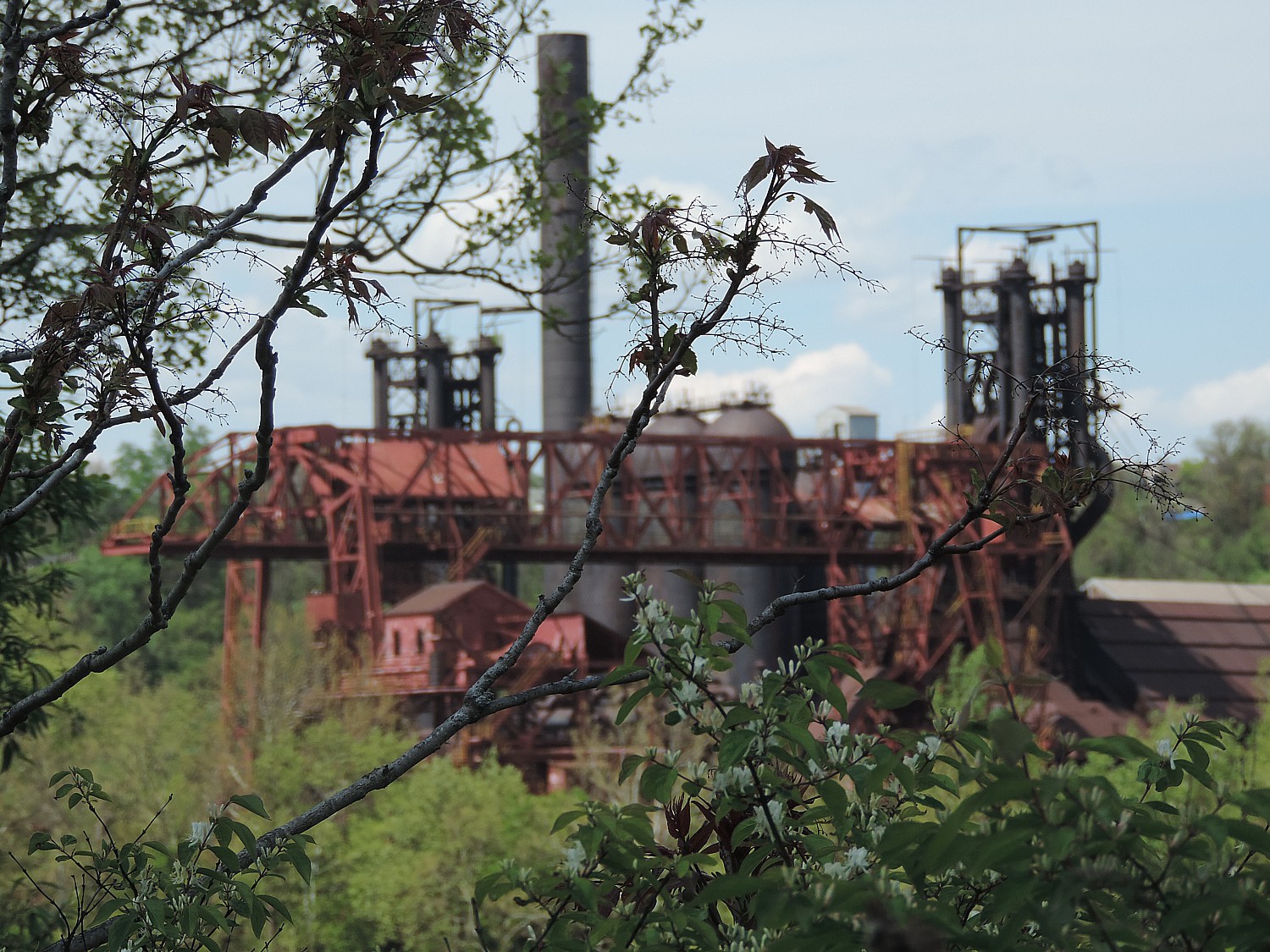
As we continue along the riverfront trail, across the way, we see get a sense of how it was – massive factories, small houses built into the hillside, giant churches commanding the highest ground.
The ending of the ride proves the most strenuous – besides the ups and downs as we negotiate the overpasses and bridges, we are fighting against a strong head wind.
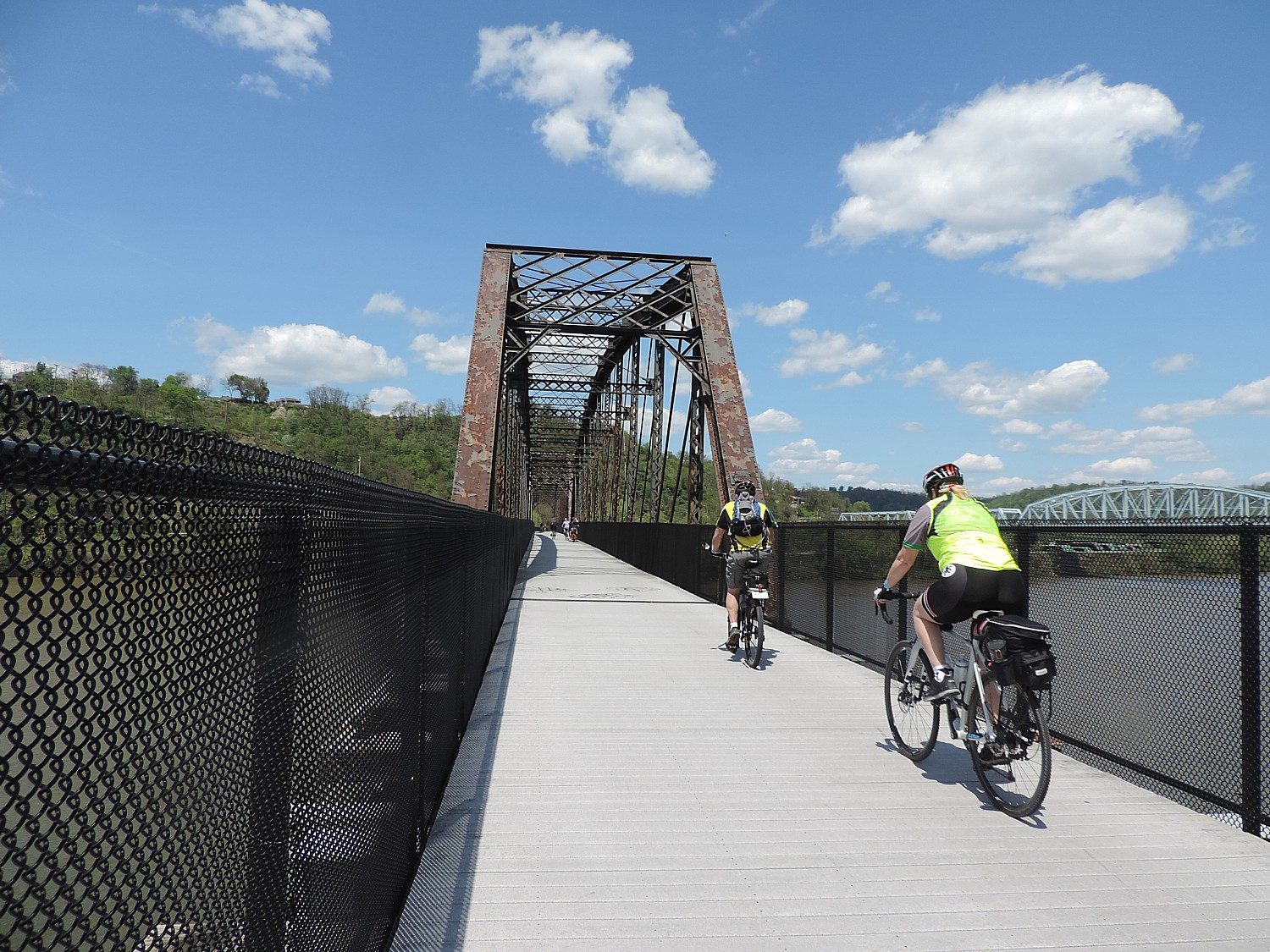
We continue on for several more miles until we come to the trickiest part of the ride – the shopping mall that has replaced Carnegie’s steel mill – and back to where we have parked, under the smokestacks.
This ride showcases a Rails-to-Trails Conservancy success story – the gorgeously maintained Great Allegheny Passage trail. It exemplifies the renaissance from industrial blight back to clean air and water and a better quality of life. Besides bringing in visitors who form the underpinning of a new, sustainable economy, the trail directly benefits locals, too – healthy living (the best preventive medicine) while offering families fun activities they can share together.
Complete from Pittsburgh in the west to Cumberland, MD in the east, the 150-mile Great Allegheny Passage connects with the 184.5-mile C&O Canal Towpath to create a 335-mile non-motorized route between Pittsburgh and Washington, DC. AMTRAK offers a walk on bicycle service. (https://gaptrail.org/, 888-282-BIKE).
For more information about the sojourn supported bike tours, visit railstotrails.org/sojourn.
Rails-to-Trails Conservancy, a nonprofit organization headquartered in Washington DC with more than 160,000 members and supporters, is the nation’s largest trails organization dedicated to connecting people and communities by creating a nationwide network of public trails, many from former rail lines. Founded in 1986, Rails-to-Trails Conservancy’s national office is located in Washington, D.C., with regional offices in California, Florida, Ohio and Pennsylvania. For more information, visit www.railstotrails.org or call 866-202-9788.
These rides are organized by Wilderness Voyageurs which offers many different biking and rafting trips including inn to inn biking trips, across the US and international: 800-272-4141, Wilderness-Voyageurs.com.
See also:
Rails-to-Trails Conservancy Takes Cyclists on Sojourn on Great Allegheny Passage
One Day, Two Nights in Pittsburgh: From Grey to Green, A Proud City Revitalized
36 Hours in Pittsburgh: Point State Park Proves Highlight of Walking Tour
36 Hours in Pittsburgh: Andy Warhol Museum is at Center of Revitalized City
36 Hours in Pittsburgh: Strip District Exemplifies City’s Past, Future
____________________
© 2016 Travel Features Syndicate, a division of Workstyles, Inc. All rights reserved. Visit goingplacesfarandnear.com and travelwritersmagazine.com/TravelFeaturesSyndicate/. Blogging at goingplacesnearandfar.wordpress.com and moralcompasstravel.info. Send comments or questions to [email protected]. Tweet @TravelFeatures. ‘Like’ us at facebook.com/NewsPhotoFeatures
